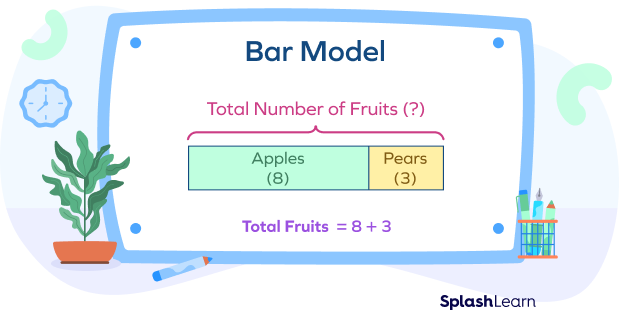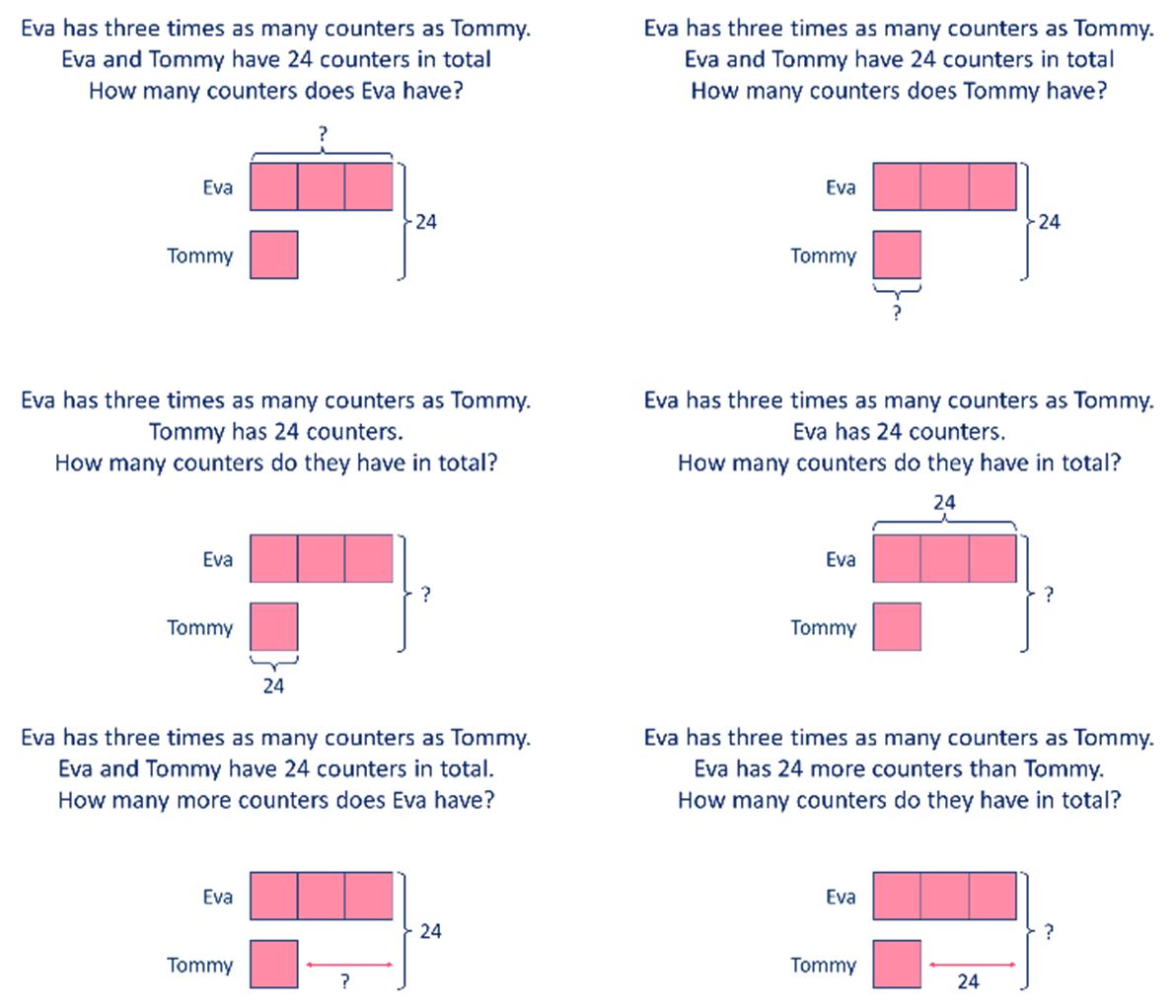The connection between visual learning and bar model drawing techniques
Wiki Article
Exploring Bar Design Drawing Techniques: A Comprehensive Guide to Envisioning Math Concepts
Bar version drawing methods function as a valuable resource for both teachers and students in picturing mathematical ideas. These models simplify complicated mathematical connections, assisting in the comprehension of addition, reduction, department, and reproduction. This guide describes reliable strategies for applying bar versions, promoting active engagement and real-world links. As readers explore the functional applications and teaching pointers, they will discover how these strategies can transform their technique to maths.Recognizing the Essentials of Bar Design Drawing
Bar model drawing functions as a powerful visual device in mathematics, helping with the understanding of analytical approaches and mathematical connections. This technique involves standing for numbers and their connections through rectangle-shaped bars, making it simpler to imagine procedures such as addition, reproduction, division, and reduction. Each bar's size matches to a certain value, allowing learners to contrast quantities and recognize proportions clearly.To produce a bar model, one starts by identifying the problem's crucial aspects, often damaging it down into components that can be visually represented. For example, in a simple enhancement trouble, 2 bars can be drawn, with their sizes standing for the addends. The consolidated length shows the amount. Additionally, bar models can be adapted for extra complicated issues, including ratios and fractions, by adjusting benches as necessary. Mastering these essentials lays a solid foundation for effective analytic and much deeper mathematical comprehension.
Advantages of Using Bar Versions in Mathematics
Making use of bar models in maths supplies countless advantages that improve discovering and understanding. These aesthetic representations aid trainees in realizing intricate concepts by damaging them down into convenient parts. Bar models supply a clear structure for showing connections in between numbers, making abstract concepts extra concrete. They promote a much deeper understanding of mathematical procedures and assist in problem-solving by permitting learners to picture the information they are working with.Moreover, bar versions support the advancement of critical believing skills, as pupils should evaluate and interpret the visual information to draw verdicts. This technique motivates energetic involvement with the material, reinforcing retention and proficiency of mathematical principles. By cultivating a strong structure in aesthetic literacy, bar designs encourage students to come close to numerous mathematical obstacles with self-confidence. In general, the integration of bar versions right into maths education and learning proves advantageous in growing both comprehension and logical abilities among pupils.
Using Bar Models to Addition and Subtraction
Bar models offer as a reliable device for visually standing for addition and reduction issues. By showing the connection between numbers, they improve understanding and promote analytical. On top of that, real-life applications of these models can assist learners understand mathematical concepts in functional contexts.Standing For Addition Visually
Visual aids can greatly boost their understanding of these operations when trainees come across addition and subtraction problems. Bar models function as efficient tools for representing addition. By separating a rectangular shape right into sectors that correspond to the numbers included, pupils can imagine the connection in between the amounts. If a student needs to include 3 and 5, they can produce a bar divided into 2 sections: one section representing 3 and the various other standing for 5. This clear depiction not just simplifies the addition procedure yet also reinforces the principle of incorporating quantities. As students manipulate these aesthetic help, they establish a deeper comprehension of addition, causing boosted analytic abilities and higher self-confidence in their mathematical capabilities.
Reduction With Bar Versions
Reduction is frequently perceived as an extra complicated procedure than addition, bar versions can successfully clarify this process for pupils. By visually representing the quantities included, pupils can much better comprehend exactly how numbers relate to one an additional. In a bar version for reduction, one bar stands for the overall, while an additional suggests the amount being subtracted. This aesthetic distinction aids trainees realize the idea of "removing." If a bar reveals 10 systems, and one more bar standing for 4 units is gotten rid of, pupils can easily see that 6 systems continue to be. This method not just promotes understanding of reduction however additionally aids in developing analytical abilities, enabling students to picture their mathematical reasoning and improve their general comprehension of mathematical ideas.Real-Life Application Instances
Comprehending reduction with bar versions lays a structure for applying these techniques in real-life situations. In various contexts, such as budgeting or shopping, individuals can imagine how much cash stays after expenditures. If an individual has $50 and spends $20, a bar design can stand for the complete quantity and the invested part, showing that $30 is left. Furthermore, parents can utilize bar versions to aid youngsters comprehend exactly how lots of even more products require to be contributed to finish a set, such as having 3 apples and needing 5. This aesthetic representation simplifies complex troubles, facilitating understanding and retention. Ultimately, bar versions act as reliable devices in everyday decision-making, boosting mathematical understanding in functional scenarios.Envisioning Reproduction and Division With Bar Versions
In checking out the application of bar versions for reproduction and division, it is crucial to comprehend their foundational principles. Building multiplication versions enables students to visualize relationships between numbers, while reliable division strategies can be shown via these aesthetic help. This strategy boosts understanding and problem-solving skills in mathematics.Understanding Bar Versions
Bar versions function as an effective aesthetic device for highlighting the ideas of multiplication and department. They enable learners to represent mathematical connections in a structured format, promoting a much deeper understanding of these operations. In multiplication, bar versions present groups of equal dimension, enabling people to imagine the complete quantity when combining these groups. On the other hand, in department, bar designs help depict exactly how an overall is divided right into smaller sized, equivalent components, clearing up the concept of partitioning. By employing these aesthetic aids, trainees can grasp the underlying concepts of reproduction and department much more effectively. This technique not just improves understanding however likewise supports analytic skills, making bar versions an invaluable asset in mathematical education and learning.Constructing Multiplication Designs
Building reproduction models utilizing bar layouts offers a clear method for imagining the procedure of reproduction. These models allow students to stand for reproduction as teams of equivalent parts, making abstract ideas more concrete. As an example, to illustrate (3 times 4), a pupil can attract one bar split into 3 equivalent sections, each representing 4 systems. In addition, developing a second bar with the very same size strengthens the understanding of repeated addition, as each section represents one team. This graph not just help in realizing multiplication however also enhances problem-solving skills. By employing bar models, students can better understand partnerships between numbers and establish a robust structure for a lot more complicated mathematical principles, bring about raised confidence in their capabilities.Imagining Department Strategies

Fixing Word Issues Utilizing Bar Model Techniques

For instance, in an issue involving addition and subtraction, students can draw separate bars for every quantity and afterwards manipulate them to find the remedy. This procedure not just clears up the issue however additionally cultivates a deeper theoretical understanding. Bar designs can be adjusted for various kinds of word troubles, making them functional throughout different mathematical topics. Inevitably, using bar models can substantially improve trainees' analytic abilities by providing a clear visual pathway to arrive at the correct answer.
Integrating Bar Models in Various Mathematics Topics
Bar designs can be seamlessly incorporated into numerous mathematics subjects, improving pupils' understanding of ideas past basic math. In algebra, these visual tools aid in representing formulas and inequalities, enabling learners to envision partnerships in between variables. When taking on geometry, bar versions can show the residential or commercial properties of forms and spatial thinking, helping pupils realize concepts like location and boundary efficiently. In statistics, bar versions promote the analysis of information collections, enabling pupils to compare amounts and acknowledge patterns visually. In addition, integrating bar designs within dimension topics aids in recognizing devices and conversions by providing a concrete representation of quantities. By employing bar versions across different mathematical areas, teachers can promote a deeper understanding of intricate principles, thus improving analytic abilities and promoting critical thinking (bar model drawing techniques). This convenience shows the utility of bar versions as a fundamental device for trainees in their mathematical journeyTips for Teaching Bar Designs Properly
Integrating bar models right into mentor methods needs thoughtful strategies to maximize their effectiveness. Educators needs to begin by introducing bar versions with straightforward, relatable examples that students can easily understand. This aids to develop self-confidence and experience with the concept. Gradually boosting the intricacy of troubles permits students to apply their abilities considerably. Furthermore, instructors must motivate pupils to produce their very own bar versions, promoting energetic interaction and possession of their discovering.Incorporating collective activities can likewise improve understanding, as students discuss and resolve problems in teams. Continual feedback is crucial; instructors need to give positive commentary on pupils' bar model representations to guide renovation. Lastly, linking bar versions to real-life circumstances reinforces their importance, assisting students see the functional applications of their mathematical abilities. By applying these methods, educators can effectively harness the power of bar designs in their mathematics direction.
Frequently Asked Concerns
Can Bar Models Be Made Use Of in Various Other Topics Besides Mathematics?
Bar versions can undoubtedly be utilized in various subjects beyond mathematics. They properly show concepts in science, social research studies, and language arts, assisting to visually stand for connections, processes, and ideas for enhanced understanding across self-controls.What Age Group Is Ideal Suited for Discovering Bar Versions?
Bar models are best suited for youngsters ages 7 to 12, as they establish concrete reasoning skills throughout this period (bar model drawing techniques). At this age, trainees can successfully comprehend abstract principles via graph and analytic techniquesAre There Digital Devices for Creating Bar Versions?

more info
Just How Can I Analyze Trainee Understanding of Bar Models?
Assessing trainee understanding of bar models can include tests, observational evaluations, and group discussions. Educators might also assess pupils' completed designs and their capacity to explain their thinking, ensuring a complete examination of comprehension.What Prevail Errors When Utilizing Bar Models?
Common blunders when utilizing bar versions consist of misrepresenting quantities, falling short to accurately identify bars, perplexing addition and reduction, overlooking to make use of constant scales, and overlooking the value of clear aesthetic separation between various components.In enhancement, bar models can be adjusted for more intricate troubles, consisting of ratios and portions, by changing the bars as necessary. Subtraction is usually viewed as an extra complex operation than addition, bar models can efficiently clarify this procedure for trainees. In a bar version for reduction, one bar represents the total, while an additional suggests the amount being subtracted. If a bar shows 10 systems, and an additional bar representing 4 systems is gotten rid of, students can quickly see that 6 systems remain. When splitting a total amount right into equivalent teams, students can draw a long bar to stand for the entire and then section it right into smaller sized bars that suggest each team.
Report this wiki page